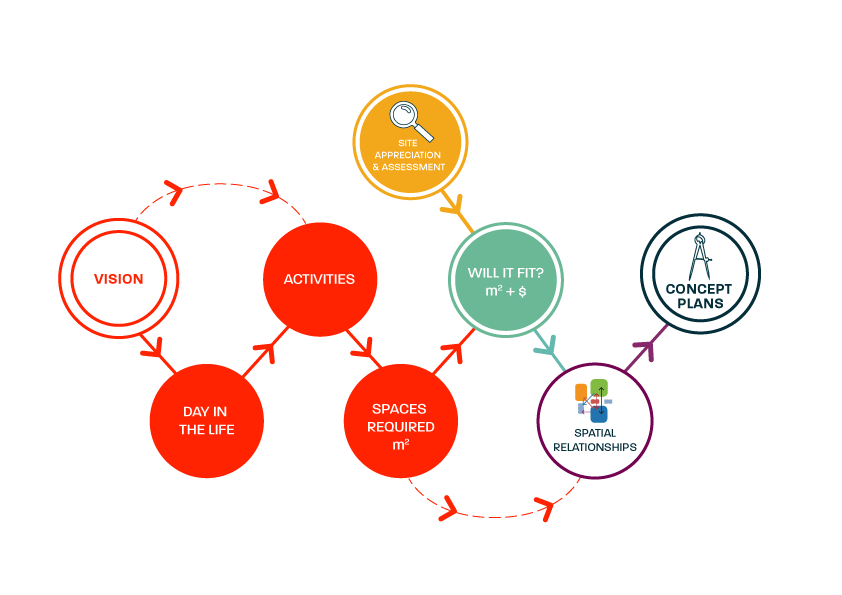Corbusier Vs.
Co-Design
by Margie
Is the Plan the Generator?
In his seminal work of modernist architectural theory, Towards a New Architecture, 1927 (translated into English by Frederick Etchells) Le Corbusier staked a bold claim that the floor plan is “the generator” – with the exterior of the building following the logic of the interior arrangement of space. The endurance of this idea has permeated society far beyond the architectural profession, with the result that many of our clients come to us with a “plan” however sketchily drawn, that describes their intentions for their project.
What then, is a plan? It’s essentially a diagram, an abstraction of thoughts, ideas and aspirations about occupying space. It could be considered an “heuristic” or a shortcut for the building. When the plan is designed at this early stage, it is by definition a biased response, based on many hidden assumptions.
A conventional plan driven design approach poses two risks:
The endurance of this idea has permeated society far beyond the architectural profession, with the result that many of our clients come to us with a “plan” however sketchily drawn, that describes their intentions for their project.
What then, is a plan? It’s essentially a diagram, an abstraction of thoughts, ideas and aspirations about occupying space. It could be considered an “heuristic” or a shortcut for the building. When the plan is designed at this early stage, it is by definition a biased response, based on many hidden assumptions.
A conventional plan driven design approach poses two risks:
 This approach delays an intuitive or instinctive solution until a deep understanding of these aspects can be defined.
By taking a broader view in collaboration with our clients in the initial stage of a project, we have found that most biases can be revealed, leading to better outcomes. The better the data we input at the beginning, the more meaningful the outputs become.
This approach delays an intuitive or instinctive solution until a deep understanding of these aspects can be defined.
By taking a broader view in collaboration with our clients in the initial stage of a project, we have found that most biases can be revealed, leading to better outcomes. The better the data we input at the beginning, the more meaningful the outputs become.
 The endurance of this idea has permeated society far beyond the architectural profession, with the result that many of our clients come to us with a “plan” however sketchily drawn, that describes their intentions for their project.
What then, is a plan? It’s essentially a diagram, an abstraction of thoughts, ideas and aspirations about occupying space. It could be considered an “heuristic” or a shortcut for the building. When the plan is designed at this early stage, it is by definition a biased response, based on many hidden assumptions.
A conventional plan driven design approach poses two risks:
The endurance of this idea has permeated society far beyond the architectural profession, with the result that many of our clients come to us with a “plan” however sketchily drawn, that describes their intentions for their project.
What then, is a plan? It’s essentially a diagram, an abstraction of thoughts, ideas and aspirations about occupying space. It could be considered an “heuristic” or a shortcut for the building. When the plan is designed at this early stage, it is by definition a biased response, based on many hidden assumptions.
A conventional plan driven design approach poses two risks:
- The brief will be limited if it is only articulated in response to the opportunities and constraints of the site and
- The site is not thoroughly understood, and respected, if it is only appreciated through the lens of the brief.
 This approach delays an intuitive or instinctive solution until a deep understanding of these aspects can be defined.
By taking a broader view in collaboration with our clients in the initial stage of a project, we have found that most biases can be revealed, leading to better outcomes. The better the data we input at the beginning, the more meaningful the outputs become.
This approach delays an intuitive or instinctive solution until a deep understanding of these aspects can be defined.
By taking a broader view in collaboration with our clients in the initial stage of a project, we have found that most biases can be revealed, leading to better outcomes. The better the data we input at the beginning, the more meaningful the outputs become. 
Related News